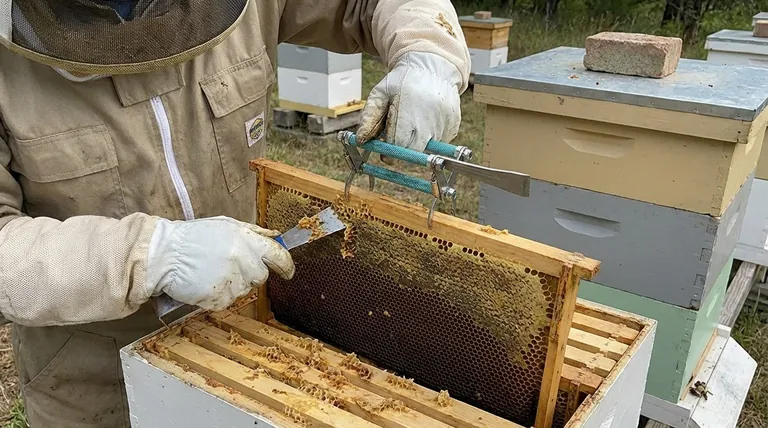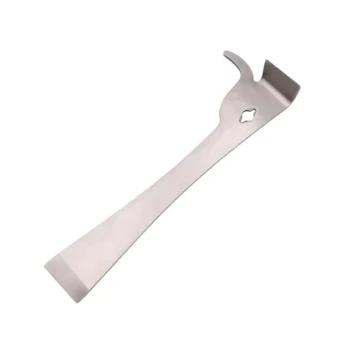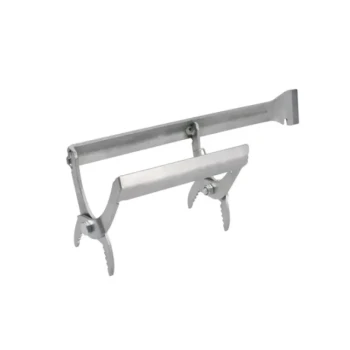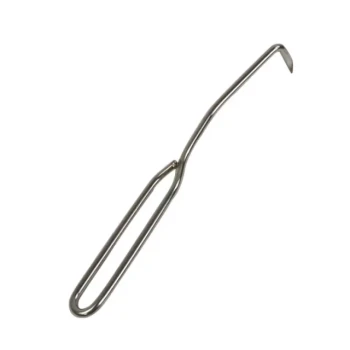To clean hive frames, you have two primary methods depending on your goal. For routine maintenance during inspections, you simply scrape off excess propolis and wax. For deep cleaning and sterilization, typically done after a harvest or to reclaim old equipment, you boil the frames in a caustic soda solution to dissolve all residue and sanitize the wood.
The key is to understand that frame cleaning isn't a single task, but a multi-level process. The method you choose—from simple scraping to chemical sterilization—should match the specific needs of your hive at that moment, balancing efficiency with colony health.

The Two Levels of Hive Frame Cleaning
Effective hive management requires recognizing when a simple tidy-up is sufficient versus when a complete sterilization is necessary.
Level 1: Routine Scraping and Tidying
This is the most common form of cleaning, performed during regular hive inspections to maintain proper function and bee space.
The goal is to remove the propolis (a resinous glue bees create) and excess wax that bees use to seal gaps. This buildup can make frames difficult to remove.
Key areas to scrape include the frame rests where the ends of the frames sit, the meeting surfaces on the upper end bars, and the tops of the frames.
Level 2: Deep Cleaning and Sterilization
This is a more intensive process reserved for preparing frames for storage, reuse after a honey harvest, or salvaging frames from a dead colony.
The most effective method involves boiling frames in a solution of caustic soda (Sodium Hydroxide) and water.
This process completely dissolves residual wax and propolis while also sterilizing the frame, which is critical for preventing the spread of diseases.
A Step-by-Step Guide to Deep Cleaning
Using caustic soda is highly effective but requires a strict focus on safety and procedure.
Preparation and Safety First
Warning: Caustic soda is highly corrosive and can cause severe chemical burns. Always wear appropriate personal protective equipment (PPE), including safety goggles and chemical-resistant gloves.
Work in a well-ventilated outdoor area. The process involves boiling, so use a large, dedicated pot that you will not use for food preparation.
The Caustic Soda Bath
Prepare a solution of approximately one part caustic soda to twenty parts water. Bring the solution to a boil.
Carefully submerge the frames in the boiling solution for 5 to 10 minutes. The wax and propolis will visibly dissolve from the wood.
Rinsing and Drying
After the caustic bath, immediately dip the frames in a separate pot of clean, boiling water. This rinses off any remaining caustic soda residue.
Allow the frames to dry completely in a clean, ventilated area before storing them or returning them to a hive.
Understanding the Trade-offs
Choosing the right cleaning method involves balancing effort, risk, and the needs of your colony.
The Efficiency of Scraping
Routine scraping is fast, requires only a hive tool, and carries no chemical risk. It is an essential part of every hive inspection.
Neglecting this simple task makes future hive work significantly more difficult and can disrupt the colony when you have to force frames apart.
The Risks of Caustic Soda
The primary risk is personal safety. Mishandling caustic soda can lead to serious injury.
Furthermore, this process is harsh on the wooden frames and the wire used for foundation. Over time, repeated boiling can weaken the wood and glue joints, reducing the frame's lifespan.
When Deep Cleaning is Non-Negotiable
Deep cleaning is essential when dealing with frames from a hive that has died out from disease. Sterilization prevents the transfer of pathogens to a new, healthy colony.
It is also the best practice for preparing frames for long-term storage, as it removes material that can attract pests like wax moths.
Making the Right Choice for Your Hive
Select your cleaning method based on your immediate objective for the frames.
- If your primary focus is regular hive maintenance: Simply scrape propolis and wax from frame contact points during each inspection to ensure they are easy to manipulate.
- If your primary focus is preparing frames after a harvest: A caustic soda bath is the most thorough way to clean and sanitize frames for future use or storage.
- If your primary focus is disease prevention: Sterilizing frames from a dead-out or unknown source with caustic soda is a critical step to protect the health of your bees.
Properly maintained frames are foundational to an accessible hive and a healthy, productive colony.
Summary Table:
| Cleaning Level | Primary Goal | Key Method | When to Use |
|---|---|---|---|
| Level 1: Routine Scraping | Maintain bee space & easy frame removal | Scrape propolis/wax with hive tool | During regular hive inspections |
| Level 2: Deep Sterilization | Sanitize frames & remove all residue | Boil in caustic soda solution | After harvest, from dead-outs, or before storage |
Keep Your Apiary Healthy and Productive with Proper Equipment Care
Proper frame cleaning is essential for hive health and honey production. For commercial apiaries and distributors, having a reliable supply of durable, easy-to-clean equipment is just as important as knowing the cleaning techniques.
HONESTBEE supplies high-quality beekeeping supplies and equipment designed to withstand rigorous cleaning protocols. Our wholesale-focused operations ensure you get the reliable gear you need to maintain a thriving, disease-free operation.
Contact HONESTBEE today to discuss your equipment needs and ensure your frames—and your business—are built to last.
Visual Guide

Related Products
- Professional 3-Bar Frame Grip with Integrated Hive Tool
- Professional Multi-Function Stainless Steel Hive Tool
- Multi-Function Plier-Style Frame Grip Hive Tool
- Precision Stainless Steel Frame Cleaner for Hive Grooves and Corners
- Professional Steel Pry-Bar Hive Tool with Painted Grip
People Also Ask
- How do you use Frame Grips during hive inspections? Achieve Calmer, More Efficient Hive Inspections
- What is required to be a beekeeper? Essential Equipment, Knowledge & Mindset
- How should Frame Grips be maintained after use? A Guide to Biosecurity and Tool Longevity
- What products pair well with Frame Grips for beekeeping? Build Your Complete Hive Inspection Toolkit
- What should beginners consider when purchasing beekeeping equipment? A Guide to Essential Starter Gear



















